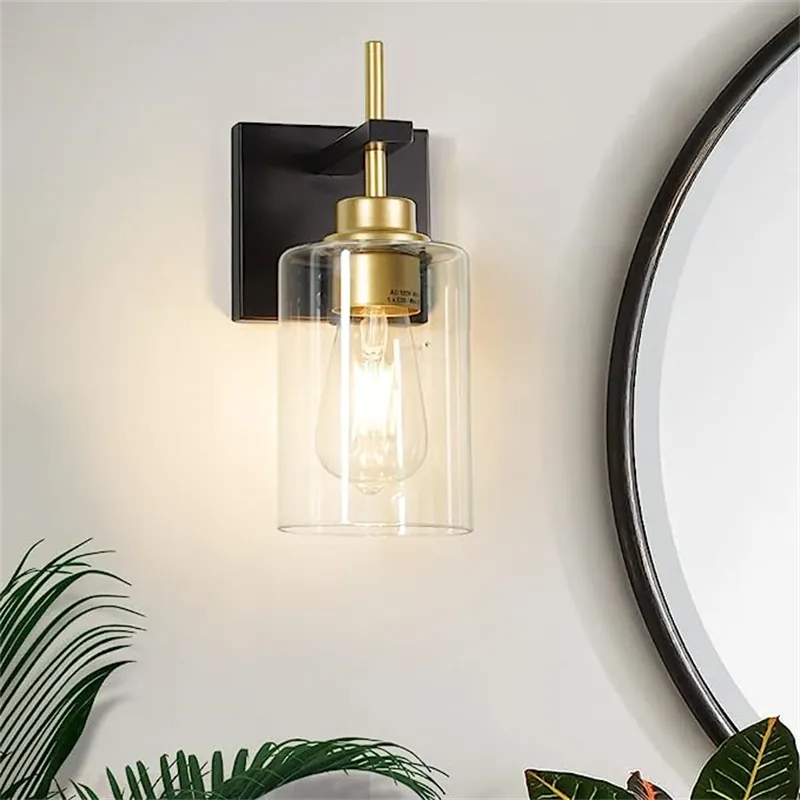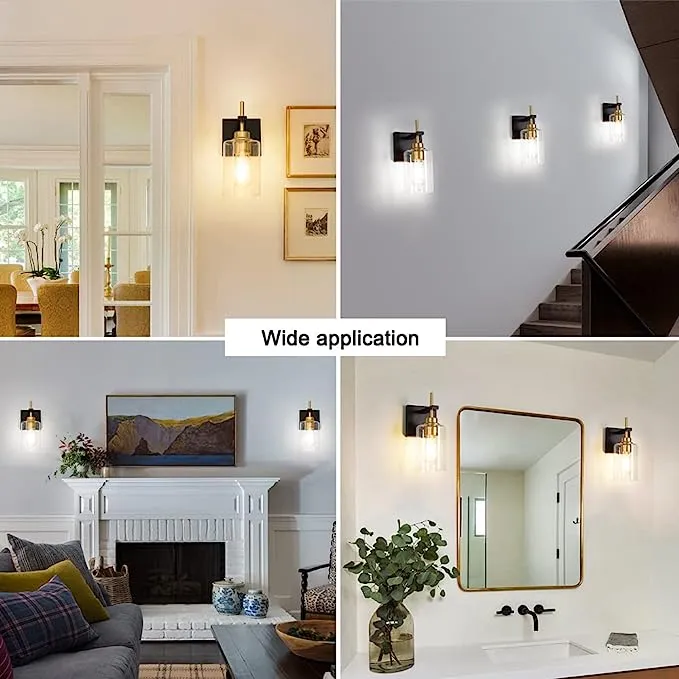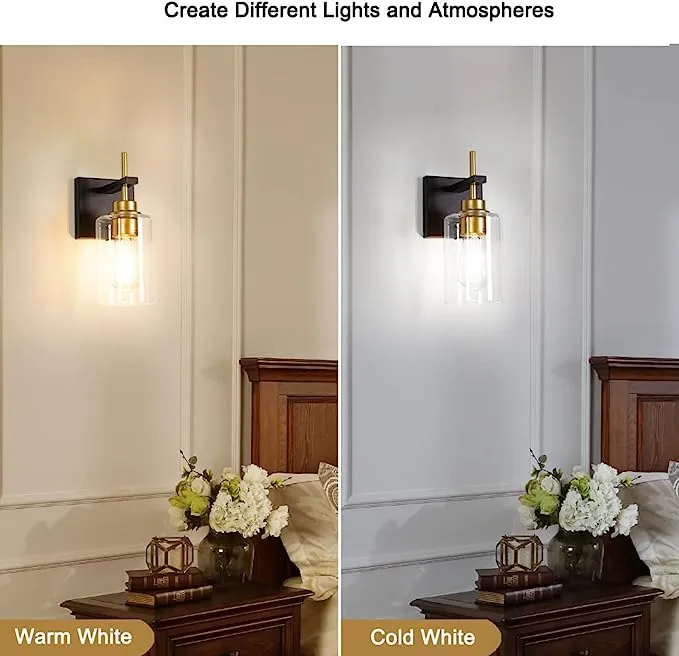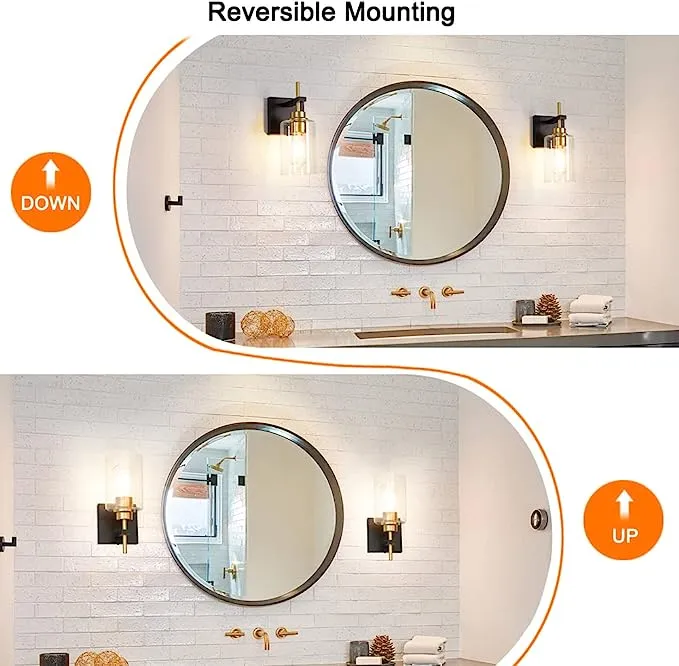Should bathroom vanity light fixtures be wider than the mirror?
In modern home design, the bathroom not only serves as a place for cleaning but also becomes an important place for daily grooming and makeup application. Therefore, bathroom lighting design, especially the placement of bathroom vanity light fixtures, has become a crucial aspect of interior design.
Many consumers and interior design professionals raise a common question: "Should bathroom vanity light fixtures be wider than the mirror?"
The professional conclusion is clear: Bathroom vanity light fixtures should ideally be wider than or the same width as the mirror to ensure even facial illumination, precise makeup application, comfortable use, and maintain aesthetic proportions.
This article will systematically answer this question from the perspectives of professional lighting design, ergonomics, light source placement principles, decorative aesthetics, and ease of use, providing scientific guidance for consumers and designers.

What is the function of bathroom vanity light fixtures?
First, it's necessary to clarify the core function of bathroom vanity light fixtures. Bathroom vanity light fixtures primarily fulfill the following responsibilities:
1. Providing Sufficient and Even Illumination
The primary function of bathroom vanity light fixtures is to provide sufficient brightness for dressing and applying makeup. While applying makeup, it's important to clearly observe facial contours, skin condition, and details. Ordinary overhead lighting often casts shadows or provides insufficient light. Therefore, placing a dedicated vanity light in front of the mirror ensures even facial illumination and reduces distracting shadows.
2. Meeting Facial Color Rendering Requirements
Accurate color perception is crucial when applying makeup. In professional design, bathroom vanity light fixtures should utilize light sources with a high color rendering index (CRI) of >80, ideally above 90, to ensure that the illumination resembles natural light and that makeup colors match your skin tone.
3. Enhancing User Comfort and Safety
Bathrooms are high-humidity environments, so vanity light fixtures must be waterproof and moisture-resistant. Furthermore, the lighting should be arranged to avoid direct glare and maximize user comfort.
Thus, the design of bathroom vanity light fixtures is more than just an extension of lighting needs; it is a core component of the vanity's functionality. Therefore, the size, position, and width of the fixture directly impact the user experience.

Bathroom Vanity Light Fixtures: Professional Considerations for Width Design
The question of "Should bathroom vanity light fixtures be wider than the mirror?" requires professional analysis from the following perspectives:
1. Scientific Requirements for Light Coverage
The width of bathroom vanity light fixtures must first meet scientific requirements for light coverage. The human face is a three-dimensional curved surface. If the fixture width is smaller than the mirror width, uneven lighting can easily occur. Specific manifestations include:
• Heavy shadows on the sides of the face, making it difficult to see clearly when applying makeup or applying makeup, affecting the overall look;
• Localized light spots create a noticeable contrast between light and dark around the eyes, chin, or cheeks, making makeup application more difficult;
• Improper light source direction can cause visual fatigue or glare.
Therefore, from the perspective of light coverage, bathroom vanity light fixtures should generally be the same width as the mirror, or even slightly wider, to ensure even light distribution and avoid localized shadows.
2. Lamp Installation Position and Height
In addition to width, the height and location of the lamp also affect the lighting effect. Professional Design Tips:
• Lamp Position: Ideally, bathroom vanity light fixtures should be placed on either side of the mirror or above it. The light source should be as close to or slightly higher than the eye level as possible to avoid casting shadows on the face from below.
• Mounting Height: Typically, the center height of the lamp should be slightly above adult eye level (approximately 160-170 cm). This can be adjusted appropriately based on the height of family members.
• Distance from the Mirror: The distance between the lamp and the mirror should not be too close or too far. Too close will cause glare, while too far will cause light attenuation and insufficient illumination.
From the above principles, it can be seen that if the width of the bathroom vanity light fixture is too narrow, it will result in insufficient lighting on both sides of the face. Even if the height and location are appropriate, it will be difficult to achieve uniform lighting.
3. Light Source Type and Illumination Angle
Common light source types for bathroom vanity light fixtures include LED tubes, LED panel lights, and fluorescent lamps. Different light sources require different considerations when choosing width:
• Linear LED tubes: Ideal for horizontal placement, they can cover the entire width of the mirror. If the tube width is smaller than the mirror, shadows will be cast on both sides.
• LED panel lights: Provide even light and can be adjusted to illuminate the entire mirror surface. If the panel is smaller than the mirror surface, additional auxiliary lights are required to ensure uniformity.
• Fluorescent lamps/strip lights: They have strong light scattering properties, but can easily cause uneven brightness if the mounting width is insufficient.
Therefore, from the perspective of light source characteristics, to ensure a perfect vanity, bathroom vanity light fixtures should ideally be wider than the mirror, or at least the same width, especially for homes with high facial lighting needs.
4. Ergonomics and User Experience
Ergonomics emphasizes that lighting design should be consistent with human vision and behavior. Specifically:
• Symmetrical lighting: Balanced lighting on both sides of the face reduces shadows and uneven makeup application during makeup application.
• Light softness: Light fixtures that are too wide or too narrow can affect light softness. A narrow fixture can easily create a strong, localized spot, while a wide fixture can cause scattered, unfocused light, reducing facial illumination.
• Eye Comfort: Bathroom vanity light fixtures of appropriate width ensure ample light at all angles, reducing glare and shadows when looking up or down.
From an ergonomic perspective, bathroom vanity light fixtures that are wider than the mirror, or at least the same width, are essential for optimal user experience.

Bathroom Vanity Light Fixtures: The Impact of Width on Decorative Aesthetics
Bathroom vanity light fixtures not only provide functional lighting but also have aesthetic value. The choice of fixture width directly impacts the visual effect:
1. Proportional Harmony
Bathroom vanity light fixtures that are slightly wider than the mirror create a more harmonious visual effect and a natural sense of extension. If the fixture is too narrow, the mirror will appear isolated, disrupting the overall proportions of the decor.
2. Spatial Extension
A light strip of appropriate width can extend the mirror's edges with light, increasing the sense of space. In small bathrooms, a vanity light fixture designed to be the width of a vanity can create a visually enlarging effect.
3. Creating a Lighting Atmosphere
Matching the width of the light source to the mirror ensures even light distribution, avoiding areas of excessive brightness or darkness, and creating a comfortable dressing environment. This balance of aesthetics and functionality enhances the user experience.
In summary, from an aesthetic perspective, bathroom vanity light fixtures should be slightly wider than the mirror to achieve visual balance while also meeting functional lighting requirements.
Bathroom Vanity Light Fixture Width: Specific Professional Recommendations
Combining lighting science, ergonomics, and aesthetic principles, professional designers offer the following recommendations for bathroom vanity light fixture width:
1. Mirror Width ≤ Bathroom Vanity Light Fixture Width ≤ Mirror Width + 20%
• This design ensures even light coverage of the mirror surface while preventing excessive width from disrupting the spatial proportions.
2. Side Lights Should Be Level with or Slightly Higher Than the Mirror
• If using vertically mounted lights on both sides, the fixture height should be level with or slightly higher than the mirror's upper edge to ensure even light coverage on both sides.
3. Avoid narrow or concentrated lighting fixtures
• Narrow fixtures can cast shadows on the sides of the face, while concentrated light sources can easily create glare and bright spots, hindering makeup application.
4. Match light intensity to width
• The wider the fixture, the lower the light intensity per unit area, thus achieving a softer lighting effect.
• If the fixture is too narrow, a high-brightness light source is needed to compensate, otherwise the lighting on the face will be uneven.
The above suggestions show that the width of bathroom vanity light fixtures directly affects both functionality and aesthetics. A width no less than that of the mirror is a reasonable professional guideline.

Common Misconceptions and Clarifications
In real-world renovations, there are some misconceptions regarding whether bathroom vanity light fixtures should be wider than the mirror:
Myth 1: The narrower the fixture, the better
Some consumers believe that narrow fixtures save space and have a simple design. However, narrow fixtures often provide insufficient illumination, easily cast shadows on the face, and hinder makeup application and grooming.
Myth 2: A luminaire that's too wide is optimal
A luminaire that's too wide may increase costs and disrupt the overall proportions of the bathroom. Excessive width won't significantly improve lighting performance and may even cause uneven light distribution.
Myth 3: Mirror size determines luminaire width
While luminaire width should be considered in conjunction with mirror size, it should also be considered in light source type, light intensity, facial lighting requirements, and aesthetic proportions.
Does Huari provide competitive quotes and promotions?
Yes. We offer factory-direct pricing, bulk order discounts, and seasonal promotions for LED night lights, vanity lamps, track lights, and panel lights. Buyers can request quotes for standard or customized designs.
As a manufacturer with ISO-certified processes and CE/RoHS/ERP compliance, we ensure both affordability and quality. Wholesale customers benefit from fast delivery, flexible order quantities, and reliable supply from a trusted Chinese LED supplier.
